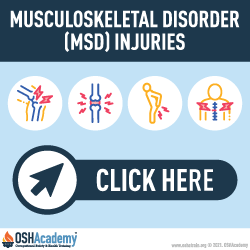Ergonomics
Helipad workers are most at risk of suffering musculoskeletal disorder (MSD) injuries while transferring patients to or from the helicopter due to the lifting and twisting movements required.
MSD injuries can include:
- muscle and ligament strain and tears
- joint and tendon inflammation
- pinched nerves
- herniated discs
Lifting or twisting while moving a patient can significantly strain the back, neck, arms, or legs resulting in an injury. It is very important to use proper patient lifting and moving techniques to avoid injury. Make sure your facility has the correct number of people ready to assist when a helicopter arrives to help minimize the risk of lifting injuries.
Possible Solutions
Preventing MSD injuries is an integral part of any health and safety program. You can reduce the risk of suffering an injury by implementing these control measures:
- Use lifting and transfer equipment when moving a patient.
- Incorporate adjustable stretchers inside the helicopter to avoid twisting and reduce unnecessary lifting.
- Use a gurney or motorized cart to transport patients from the helicopter to the emergency room.
- Do not rush. Try to overcome distractions. Rushing while distracted increases the risk of MSDs, tripping, or falling.
Knowledge Check Choose the best answer for the question.
1-4. When are helipad workers most at risk of suffering musculoskeletal disorder (MSD) injuries?
You forgot to answer the question!

